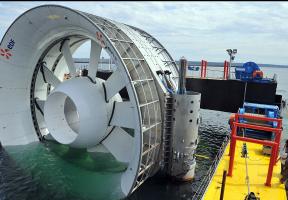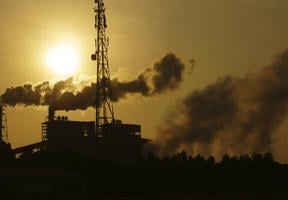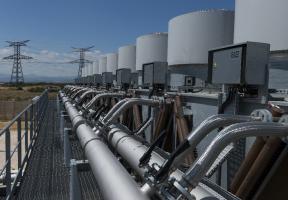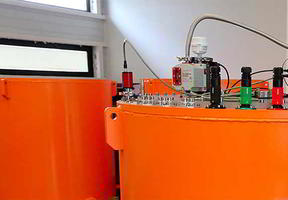What Is Compressed Air Energy Storage?
10 min read
Compressed air (CAES) is a way of capturing energy for use at a later time by means of a compressor. The system uses the energy to be stored to drive the compressor. When the energy is needed, the pressurized air is released. That, in a nutshell, is how CAES works. Of course, in reality it is often more complicated.

© gettyimages - Pneumatic energy, conveyed by compressed air networks, is used in many plants and in various equipment such as jackhammers.
The intermittency of wind and solar production has prompted researchers to examine a wide range of technologies for storing energy. These include batteries, cells, inertia wheels and, on a larger scale, pumped-storage plants. Over the last 20 years, compressed air storage has sparked a great deal of interest. However, existing CAES plants are still plagued by low efficiency.
To Begin with, How Does Compressed Air Produce Energy?
Pneumatic energy has been around for decades in a variety of forms. It is stored in a compressed gas (usually air) and subsequently converted into when the gas is displaced to a lower pressure environment. Compressed air networks were first used in towns and factories in the 19th century. Over time, pneumatic energy has given rise to many applications, including the jackhammer and mining equipment.
During the last 20 years, efforts have focused on developing methods of storing compressed air that can be used later to generate . After experimenting with small-scale systems, researchers are now concentrating on large-scale developments equipped with gas turbines and huge underground storage caverns.
The European Union has provided funding to the RICAS2020 project in Eisenerz, Austria, and it has also invested in a CAES project in Larne, Northern Ireland. In Australia, a disused mine is being converted into a compressed air storage facility. The 5-megawatt demonstration project is scheduled to come into service in 20201.
How Does a CAES Plant Work?
In the storage phase, air from the atmosphere is compressed using a device powered by “green electricity” generated by solar panels or wind turbines during off-peak hours. The compressed air is then stored in an underground cavern.
In the discharge phase, the compressed air is extracted from the reservoir, injected into a combustion chamber and fed through a turbine connected to a generator to convert the energy back into electricity (see video). The compressed air alone is not enough to power the turbine, so another form of energy, such as natural gas, is added.
What Are the Advantages of CAES Systems?
In a conventional gas turbine, the air needs to be compressed to a very high pressure (100-300 bars) for combustion to occur. This process requires a large amount of energy, i.e., one-third of the turbine’s total output. But, as many know, the price of electricity varies throughout the day. In a CAES system, air is compressed and stored during off-peak hours, when electricity is cheaper, and extracted and run through a turbine during peak, high-cost periods.
What Are the Drawbacks of CAES Systems?
The biggest challenge is dealing with waste . During compression, the air temperature rises significantly, much like a bicycle pump when you fill a tire. This heat is difficult to recover.
During decompression, the temperature drops. The air therefore needs to be reheated before expansion in the turbine, which requires additional energy, such as gas. As a result, CAES systems have low efficiencies in the range of 40-50%.
This is true of the two industrial-sized CAES plants operating in the world today in Huntorf, Germany and McIntosh, Alabama (USA). Recent projects aim to recover the from compression either by storing it in a separate reservoir or rock formation, or by utilizing a hydraulic system. Although theoretical efficiency approaches 65-70%, those levels have yet to be achieved.
Another challenge is finding underground caverns adapted to the aboveground facilities. Natural caverns can be used for large-scale developments, provided they are airtight. If no such structures are available, artificial reservoirs must be dug and lined with non-corrodible materials that are resistant to high pressure and temperature conditions.
Like all electrical energy storage systems, CAES is subject to volume and time constraints. The system is potentially most useful for storing large amounts of energy during short periods of time. CAES is therefore not a viable solution for the housing industry or seasonal durations, a bit like pumped-storage power stations.
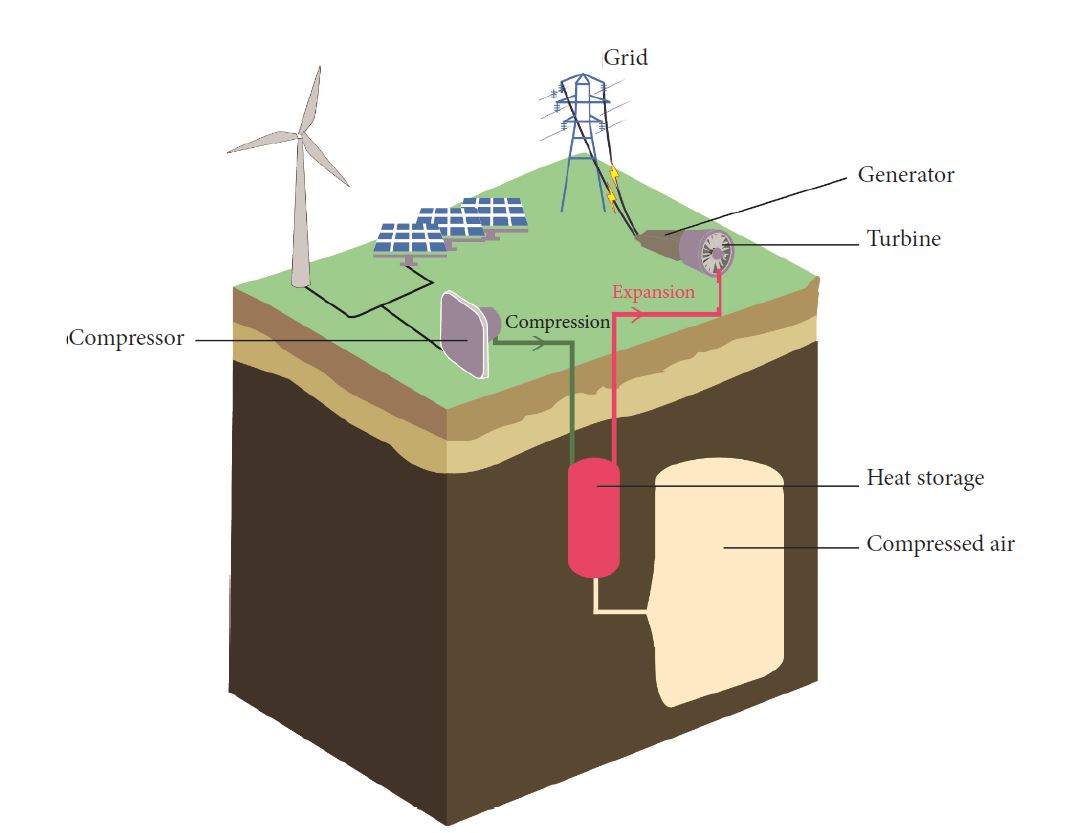
Other Compressed Air Applications
Research is being conducted on using compressed air to generate wave energy. The technology involves using hydraulic cylinders (horizontal or vertical) that absorb the energy in the motion of waves by compressing air inside a chamber. The energy captured is then converted into electricity. For now, wave energy conversion is still in the early stages of development.
The automobile industry is experimenting with compressed air as an alternative power source in hybrid vehicles. The system entails using a pump to recover the energy produced during braking and storing it in an onboard air tank. When the car accelerates, the pneumatic energy is transferred back to the drivetrain to support the internal combustion engine.
- See article (in French)


